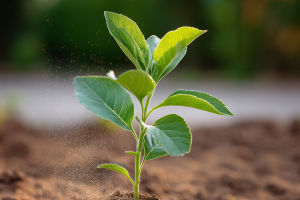Are you tired of store-bought vegetables that lack flavor and are loaded with pesticides? What if we told you that growing your own vegetables could be easy, fun, and rewarding?
By starting a garden at home, we not only gain access to fresh, healthy produce but also develop a deeper connection with nature. Growing your own food means knowing exactly what's in it, and you have full control over how it's grown.
Step 1: Choosing the Right Location for Your Garden
The first step in planting a vegetable garden is selecting the right location. Whether you have a small balcony, a spacious backyard, or just a windowsill, there's always a way to make it work. Most vegetables need plenty of sunlight, so it's important to choose a spot that gets at least six hours of sunlight per day. If you don't have a sunny outdoor space, you can still grow some veggies indoors with the right lighting setup!
Step 2: Selecting Your Seeds
Once you've found the perfect spot, it's time to choose the seeds. Start with easy-to-grow vegetables like lettuce, tomatoes, carrots, and herbs like basil and parsley. These plants grow quickly and don't require a lot of care, making them ideal for beginners. Make sure to choose seeds that are suitable for your climate—some plants thrive in warm weather, while others prefer cooler conditions.
Step 3: Preparing the Soil
Healthy soil is the foundation of a successful vegetable garden. Start by loosening the soil and removing any weeds or rocks. Adding compost or organic matter can improve the soil's texture and fertility, helping your plants grow stronger and healthier. If you're planting in containers, choose a high-quality potting mix that provides good drainage.
Step 4: Planting Your Seeds
Follow the instructions on the seed packet for planting depth and spacing. Some seeds need to be sown deep in the soil, while others can be planted on the surface. Make sure to plant them at the right distance apart to give each plant enough room to grow. Water them gently after planting, ensuring the soil stays moist but not waterlogged.
Step 5: Caring for Your Plants
After planting, it's important to take good care of your plants. Water them regularly, especially during dry spells, but avoid overwatering. Mulching around the plants can help retain moisture and prevent weeds. Keep an eye out for pests and diseases, and take action early to prevent damage. Using natural pest control methods, such as introducing beneficial insects or using homemade sprays, can keep your garden safe and healthy.
Step 6: Harvesting Your Vegetables
One of the most exciting parts of gardening is harvesting your own food! Each vegetable has its own harvesting time, so make sure to monitor your plants closely. When your veggies are ready, pick them at their peak of ripeness for the best flavor. Freshly harvested vegetables taste amazing and are packed with nutrients.
Conclusion: Enjoying the Fruits of Your Labor
Growing your own vegetables from seed to table is not only a fun and satisfying hobby, but it also provides you with fresh, organic produce right at your doorstep. Whether you're looking to save money, eat healthier, or simply enjoy the process of gardening, growing your own food can be a rewarding experience. So, why not give it a try? Start small, and you'll soon be enjoying the fruits of your labor! Happy gardening!


